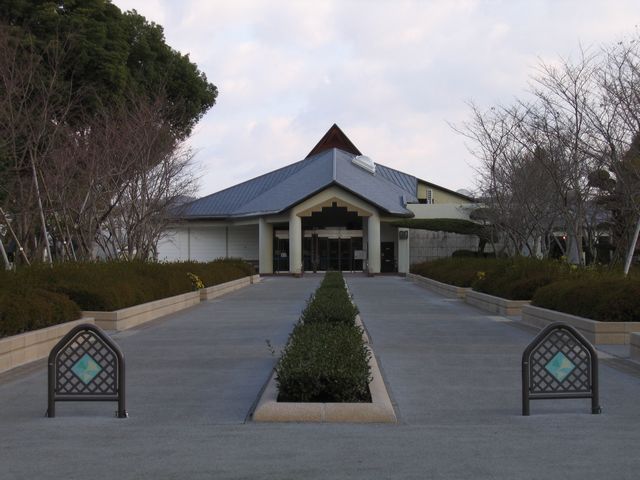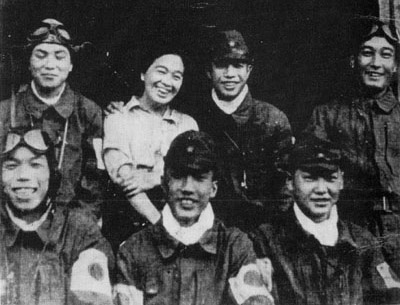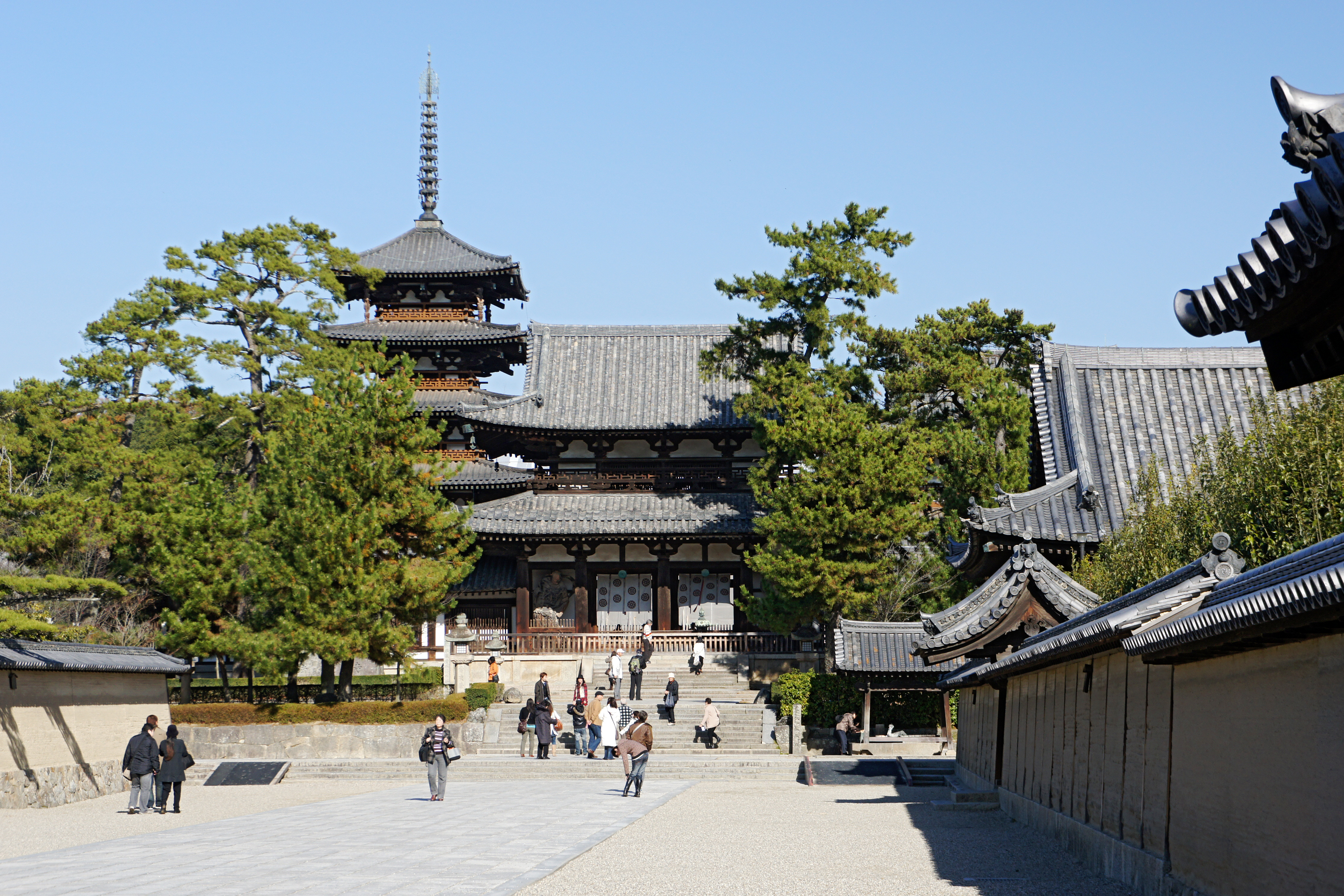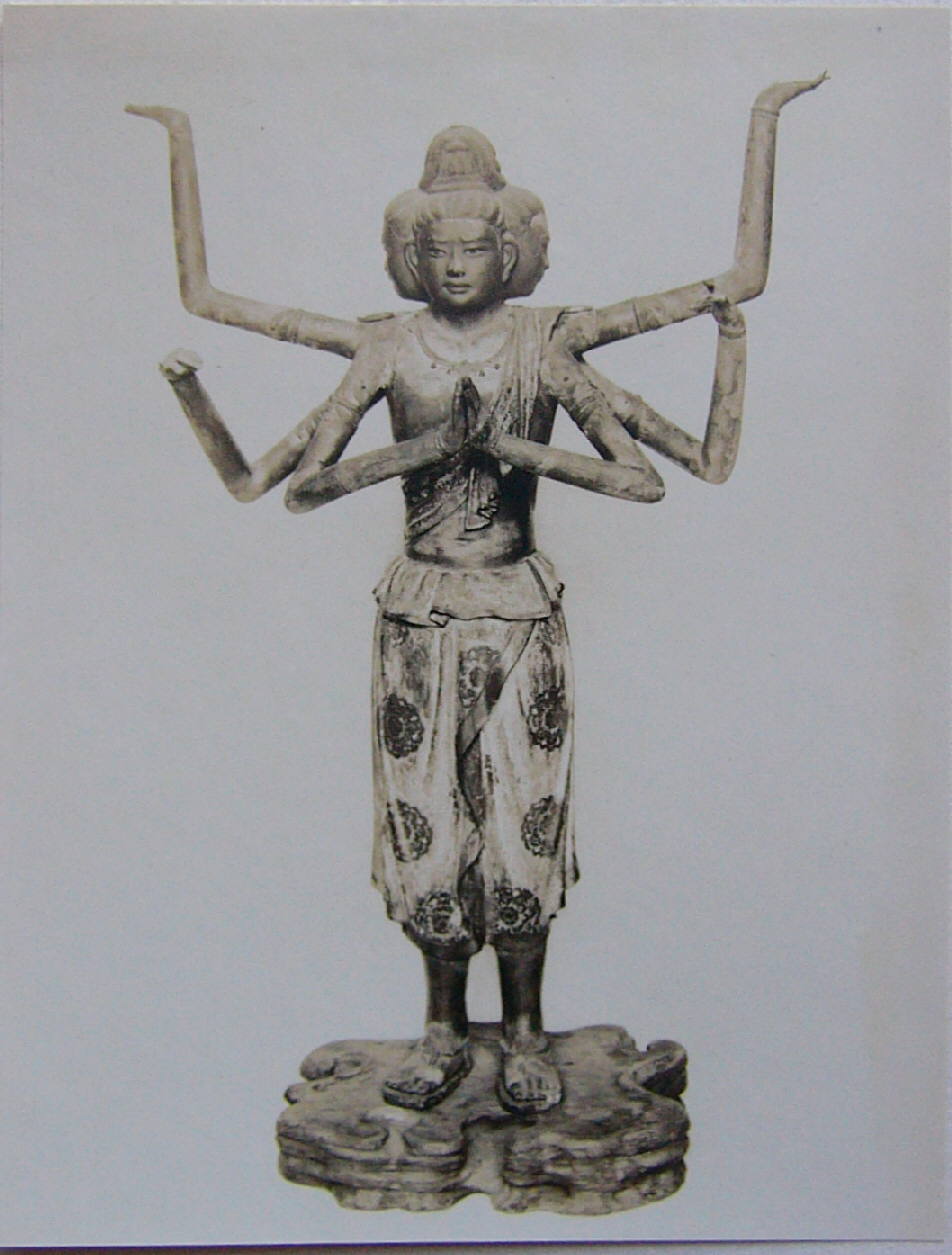|
Chiran Peace Museum For Kamikaze Pilots
The airbase at Chiran, Minamikyūshū, on the Satsuma Peninsula of Kagoshima, Japan, served as the departure point for hundreds of Special Attack or kamikaze sorties launched in the final months of World War II. A peace museum dedicated to the pilots, the , now marks the site. Airbase The Imperial Japanese Army airbase at Chiran, Kagoshima, with its two runways, was the principal base of the kamikaze pilots during the Battle of Okinawa. Of the 1,036 army aviators who died in these attacks, 439 were from Chiran. Of the total number, 335 were classed as "young boy pilots" (少年飛行兵). Peace Museum In 1975 a museum was built to commemorate the lives of the pilots and document their "patriotic efforts for peace". Enlarged in 1985, exhibits include four planes: a Nakajima Ki-43 Hayabusa, a 1943 Kawasaki Ki-61 Hien, a 1944 Nakajima Ki-84 Hayate, and a Mitsubishi Zero recovered from the seabed in 1980. On a personal level, the exhibit includes letters, poems, essays, test ... [...More Info...] [...Related Items...] OR: [Wikipedia] [Google] [Baidu] |
Kawasaki Ki-61 Hien
The Kawasaki Ki-61 ''Hien'' (飛燕, "flying swallow") is a Japanese World War II fighter aircraft. Used by the Imperial Japanese Army Air Service, it was designated the "Army Type 3 Fighter" (三式戦闘機). Allied intelligence initially believed Ki-61s were Messerschmitt Bf 109s and later an Italian Macchi C.202, which led to the Allied reporting name of "Tony", assigned by the United States War Department. The design originated as a variant of the Kawasaki Ki-60, which never entered production. The Ki-61 became the only mass-produced Japanese fighter of the war to use a liquid-cooled inline V engine. Over 3,000 Ki-61s were produced. Initial prototypes saw action over Yokohama during the Doolittle Raid on 18 April 1942, and continued to fly combat missions throughout the war. Design and development The Ki-61 was designed by Takeo Doi and his deputy Shin Owada in response to a late 1939 tender by the ''Koku Hombu'' for two fighters, each to be built around the Daimler-Be ... [...More Info...] [...Related Items...] OR: [Wikipedia] [Google] [Baidu] |
Time (magazine)
''Time'' (stylized in all caps) is an American news magazine based in New York City. For nearly a century, it was published Weekly newspaper, weekly, but starting in March 2020 it transitioned to every other week. It was first published in New York City on March 3, 1923, and for many years it was run by its influential co-founder, Henry Luce. A European edition (''Time Europe'', formerly known as ''Time Atlantic'') is published in London and also covers the Middle East, Africa, and, since 2003, Latin America. An Asian edition (''Time Asia'') is based in Hong Kong. The South Pacific edition, which covers Australia, New Zealand, and the Pacific Islands, is based in Sydney. Since 2018, ''Time'' has been published by Time USA, LLC, owned by Marc Benioff, who acquired it from Meredith Corporation. History ''Time'' has been based in New York City since its first issue published on March 3, 1923, by Briton Hadden and Henry Luce. It was the first weekly news magazine in the United St ... [...More Info...] [...Related Items...] OR: [Wikipedia] [Google] [Baidu] |
Collective Memory
Collective memory refers to the shared pool of memories, knowledge and information of a social group that is significantly associated with the group's identity. The English phrase "collective memory" and the equivalent French phrase "la mémoire collective" appeared in the second half of the nineteenth century. The philosopher and sociologist Maurice Halbwachs analyzed and advanced the concept of the collective memory in the book ''Les cadres sociaux de la mémoire'' (1925). Collective memory can be constructed, shared, and passed on by large and small social groups. Examples of these groups can include nations, generations, communities, among others. Collective memory has been a topic of interest and research across a number of disciplines, including psychology, sociology, history, philosophy, and anthropology. Conceptualization of collective memory Attributes of collective memory Collective memory has been conceptualized in several ways and proposed to have certain attribute ... [...More Info...] [...Related Items...] OR: [Wikipedia] [Google] [Baidu] |
Tome Torihama
Tome Torihama (鳥濱 トメ) (June 20, 1902 – April 22, 1992)was the owner of a restaurant called "Tomiya Shokudo" in Kagoshima that served kamikaze pilots before they flew off to war. She is called the "Mother of Kamikazes". Career Torihama was born in Kagoshima prefecture on June 20, 1902. When she turned 18, she married Yoshkiyo Torihama. They had two daughters, Miako and Reiko. In 1929 Torihama opened the Tomiya Shokudo. When the Chiran Airbase opened in 1942, the Tomiya Shokudo became the designated dining hall for the soldiers living on the base. After the Japanese Special Attack Units were formed in 1945, many of the kamikaze pilots would visit Torihama's restaurant. She became close with many of the young pilots, and would send their final letters to their families for them. After the war ended, the Supreme Commander of Allied Powers requested to patronize Torihama's restaurant, but she refused. However, when the town had a welcome party for the SCAP at the Tomiy ... [...More Info...] [...Related Items...] OR: [Wikipedia] [Google] [Baidu] |
Womb Realm
In Vajrayana Buddhism, the Womb Realm ( sa, garbhakoṣadhātu, Traditional Chinese: 胎蔵界; Pinyin: ''Tāizāngjiè''; Romanji: ''taizōkai'') is the metaphysical space inhabited by the Five Compassion Buddhas. The Womb Realm is based on the ''Mahavairocana Tantra''. The name of the mandala derives from chapter 2 of the sutra, where it is said that the buddha Mahāvairocana revealed the mandala's secret teachings to his disciple Vajrasattva from his "womb of compassion". In other translations, the term Matrix Realm or Matrix Mandala are used. The Womb Realm is a very popular subject for mandalas, and along with the Diamond Realm (''vajradhātu'') Mandala forms the Mandala of the Two Realms. This mandala, along with the Diamond Realm, form the core of Chinese Tangmi and Japanese Tendai and Shingon Buddhist rituals, including abhisheka "initiation". In this ritual, new initiates are blindfolded and asked to toss a flower upon a mandala. Where the flower lands helps decide wh ... [...More Info...] [...Related Items...] OR: [Wikipedia] [Google] [Baidu] |
Hōryū-ji
is a Buddhist temple that was once one of the powerful Seven Great Temples, in Ikaruga, Nara Prefecture, Japan. Its full name is , or Learning Temple of the Flourishing Law, the complex serving as both a seminary and monastery. The temple was founded by Prince Shōtoku in 607, but according to the '' Nihon Shoki'', in 670 all buildings were burned down by lightning. However, reconstructed at least 1,300 years ago, the Kondō (main hall) is widely recognized as the world's oldest wooden building. A fire that broke out during the dismantling and repair of the Kondō on January 26, 1949 destroyed a mural of the Asuka period, a national treasure, and shocked the Japanese. Based on this accident, the day when the fire broke out is now fire prevention day for cultural properties. In 1993, Hōryū-ji Temple, along with Hokki-ji, was registered as Japan's first UNESCO World Heritage Site under the name of '' Buddhist Monuments in the Hōryū-ji Area''. A tree ring survey conducted ... [...More Info...] [...Related Items...] OR: [Wikipedia] [Google] [Baidu] |
List Of National Treasures Of Japan (sculptures)
In the mid-6th century, the introduction of Buddhism from Korea (Baekje) to Japan resulted in a revival of Japanese sculpture. Buddhist monks, artisans and scholars settled around the capital in Yamato Province (present day Nara Prefecture) and passed their techniques to native craftsmen. Consequently, early Japanese sculptures from the Asuka and Hakuhō periods show strong influences of continental art, which initially were characterized by almond-shaped eyes, upward-turned crescent-shaped lips and symmetrically arranged folds in the clothing. The workshop of the Japanese sculptor Tori Busshi, who was strongly influenced by the Northern Wei style, produced works which exemplify such characteristics. The Shakyamuni triad and the Guze Kannon at Hōryū-ji are prime examples. By the late 7th century, wood replaced bronze and copper. By the early Tang dynasty, greater realism was expressed by fuller forms, long narrow slit eyes, softer facial features, flowing garments and embellishm ... [...More Info...] [...Related Items...] OR: [Wikipedia] [Google] [Baidu] |
Japanese Sculpture
Sculpture in Japan began with the clay figure. Towards the end of the long Neolithic Jōmon period, some pottery vessels were "flame-rimmed" with extravagant extensions to the rim that can only be called sculptural, and very stylized pottery dogū figures were produced, many with the characteristic "snow-goggle" eyes. During the Kofun period of the 3rd to 6th century CE, haniwa terracotta figures of humans and animals in a simplistic style were erected outside important tombs. The arrival of Buddhism in the 6th century brought with it sophisticated traditions in sculpture, Chinese styles mediated via Korea. The 7th-century Hōryū-ji and its contents have survived more intact than any East Asian Buddhist temple of its date, with works including a ''Shaka Trinity'' of 623 in bronze, showing the historical Buddha flanked by two bodhisattvas and also the Guardian Kings of the Four Directions. Jōchō is said to be one of the greatest Buddhist sculptors not only in the Heian perio ... [...More Info...] [...Related Items...] OR: [Wikipedia] [Google] [Baidu] |
Cult Image
In the practice of religion, a cult image is a human-made object that is venerated or worshipped for the deity, spirit or daemon that it embodies or represents. In several traditions, including the ancient religions of Egypt, Greece and Rome, and modern Hinduism, cult images in a temple may undergo a daily routine of being washed, dressed, and having food left for them. Processions outside the temple on special feast days are often a feature. Religious images cover a wider range of all types of images made with a religious purpose, subject, or connection. In many contexts "cult image" specifically means the most important image in a temple, kept in an inner space, as opposed to what may be many other images decorating the temple. The term idol is a pejorative term for a cult image, except in Indian English, where it is widely accepted as a neutral English term for a murti or cult image. Idolatry is a pejorative term for the worship or excessive veneration of (mainly) cult im ... [...More Info...] [...Related Items...] OR: [Wikipedia] [Google] [Baidu] |
Kannon
Guanyin () is a Bodhisattva associated with compassion. She is the East Asian representation of Avalokiteśvara ( sa, अवलोकितेश्वर) and has been adopted by other Eastern religions, including Chinese folk religion. She was first given the appellation of "Goddess of Mercy" or "Mercy Goddess" by Jesuit missionaries in China. Guanyin is short for Guanshiyin, which means " he One WhoPerceives the Sounds of the World." On the 19th day of the sixth lunar month, Guanyin's attainment of Buddhahood is celebrated. Some Buddhists believe that when one of their adherents departs from this world, they are placed by Guanyin in the heart of a lotus, and then sent to the western pure land of Sukhāvatī. Guanyin is often referred to as the "most widely beloved Buddhist Divinity" with miraculous powers to assist all those who pray to her, as is mentioned in the ''Pumen chapter'' of ''Lotus Sutra'' and ''Kāraṇḍavyūha Sūtra''. Several large temples in East Asia ... [...More Info...] [...Related Items...] OR: [Wikipedia] [Google] [Baidu] |
Buddhist Temples In Japan
Buddhist temples or Buddhist monasteries together with Shinto shrines, are considered to be amongst the most numerous, famous, and important religious buildings in Japan.The term "Shinto shrine" is used in opposition to "Buddhist temple" to mirror in English the distinction made in Japanese between Shinto and Buddhist religious structures. In Japanese the first are called , the second . The shogunates or leaders of Japan have made it a priority to update and rebuild Buddhist temples since the Momoyama period. The Japanese word for a Buddhist monastery is ( ''kun'' reading) and the same kanji also has the pronunciation ''ji'' (''on'' reading), so that temple names frequently end in ''-dera'' or ''-ji''. Another ending, , is normally used to refer to minor temples. Such famous temples as Kiyomizu-dera, Enryaku-ji and Kōtoku-in are temples which use the described naming pattern. Etymology The Japanese word for a Buddhist temple was anciently also written phonetically 天良, ''ter ... [...More Info...] [...Related Items...] OR: [Wikipedia] [Google] [Baidu] |









